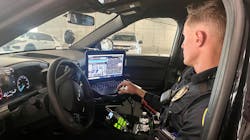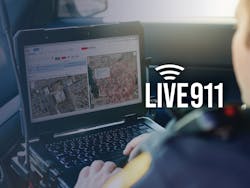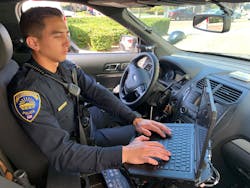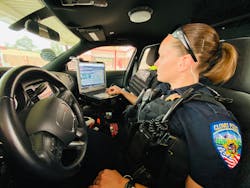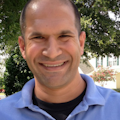Responding in Real Time: Live911 is Changing How Officers Receive Emergency Calls
Law enforcement agencies are always striving to improve their response times. Every second counts, and ability to receive the right information at the right time can directly impact the outcome of a call.
In the summer of 2019, Tom Goodwin, Vice President of Marketing for California-based software company HigherGround, was having a cup of coffee with retired Chula Vista Police Captain Fritz Reber, who had recently penned an article focused on letting officers hear emergency calls in real time. Goodwin said that he was instantly intrigued by the idea and was surprised that no one had yet tried to make that idea a reality.
“I realized that we had a lot of the technology already sorted out because HigherGround is a call recording company,” he says. “We do call recording out of (Capture911) all the time. It was not that far of a leap to take what he was talking about to the field.”
From there, HigherGround entered discussions with Chula Vista and the department started beta testing of Live911 by the fall of 2019. While the start of the coronavirus pandemic posed some challenges in the beginning of 2020, the company announced product availability and left the beta stage in June of that year. Goodwin said that the department was instrumental in helping the company figure out the operational aspects of what went on, how they could control the streaming and what was important and not important to the officers.
“During that early period, we learned a lot,” Goodwin says. “What we have learned over time is that we’re actually providing an enhancement to the 911 center, an enhancement to policing and it’s enhancing outcomes.”Making the idea work
Goodwin says that the basic premise behind Live911 is that officers who are on patrol out in the field are always facing pressure to respond to calls quicker. To cut through the volume of emergency calls, the area around officers, using the software in their patrol vehicles, was geofenced so that they would only hear what’s going on around them and be able to make the decision to self-dispatch. “That’s really when we have the situations where lives are saved or where burglars are caught in the act,” he says. “That’s where this really starts to shine because the officer happened to be very close.”
HigherGround also found that for the call takers and dispatchers, when they know that the officer is listening, they can say to the caller, “Please continue, take a breath, calm down, keep talking; the officer is listening.” Goodwin says that this has led callers to produce more information that helps the officers understand what is going before responding. “They are not coming in hot and blind; they are coming in knowledgeable.”
Live911 is currently being used as a browser-based application that allows officers to listen in to the live stream of the call. While the officers can listen in to calls, they cannot talk back. They have to use their radios to call dispatch to ask questions. Goodwin noted that despite this, radio time has been reduced since the officer is hearing all of the information firsthand. “They don’t really need to because they are hearing everything they would need to hear from the very beginning.” Most of the Live911 programs are overlays to existing recording software, including the company’s Capture911 software. Soon, HigherGround will have both Live911 and Capture911 working seamlessly together. The company is also working on a native application for cellphones that officers could use outside of their patrol vehicles.
“It doesn’t take long for the officers and the deputies in the field to want this,” he says. “It really gives them an additional situational awareness that wasn’t available to them previously. They carry scanners and listen to the radio traffic, but being able to hear the actual call has made a huge difference.”Implementing the program
Members of the Clovis Police Department in California traveled south to visit the Chula Vista Police Department shortly before the coronavirus pandemic hit to take a look at their drone program. At that point, Chula Vista had already begun using Live911 to help dispatch their drones and they started talking to them about the technology.
“We thought it would be awesome to have our patrol units out in the field have access to Live911 while they were responding to calls and at that time, Chula Vista hadn’t quite done that yet. They were just getting ready to roll that out,” says Clovis Lt. Jim Munro. “We hopped on board with them and HigherGround and we decided to fully deploy our patrol division with Live911.”
After Clovis reached an agreement with HigherGround, the company was able to very quickly deploy Live911 while working with the department’s internal IT division. While all officers had the ability to use the program, it wasn’t mandated. “We have about 75 to 80 officers assigned to our patrol division and we left it up to them whether or not they wanted to use the product because we do realize that there are a lot of distractions in the cars between the two-way radio, the scanner, the mobile data computer, just driving in general and it was going to be another potential distraction, so we wanted to make sure this was voluntary not mandatory,” says Munro. “I would estimate that probably about 75% of all of our patrol staff took us up on the offer and have Live911 accounts and are actually listening to live 911 calls each day as they are here at work. We’ve just had really good success ever since we started using it.”
The Clovis Police Department has piloted a lot of new technology, but Munro noted that while a lot of that technology sounds good and looks good, it often ends up costing the department more time than it saves. Luckily, Live911 has been different. “It’s been one of the pieces of technology that has been a real win for us lately,” he says. “This is one of those things that is literally saving time and saving lives as well.”
Munro says that the training required for officers before getting started on the program was very minimal. The training was mainly done in briefings and those officers who got a username and password were shown how to log in and how the system works. The biggest part of the training focused on responding to the calls because typically, when the call comes in through dispatch, the officers in the past have never heard the 911 call, so the first time they even hear about it is when it hits the radio. This is different through Live911 because the officers now had the opportunity to respond to the calls before it even hits the radio. “A lot of training was not really spent on how the software works, because it’s extremely simple,” he says. “It was more spent on how we’re going to respond to these calls and how to say you’re in route when you don’t have all the details quite yet and you haven’t actually been dispatched to it.”
Working with dispatch
When Live911 was first launched, Goodwin said there was initially some pushback from dispatch. “They felt like this was taking their jobs away from them,” he says. “You aren’t taking the call takers and dispatchers out of the loop, you’re actually enhancing their ability to actually hear. They can be more focused on getting the right accurate information. The officers are getting to hear, quickly, what’s going on, and it actually makes for a combination that improves response times, improves information and awareness. It improves all the way around and both sides benefit from that.”
Munro says that the Clovis Police Department was a little concerned at first about how dispatch would react to the addition of Live911. “That’s what they do. Anytime you take that out of their hands, it’s a little concerning, but with our protocols we put in place on how to respond to these things before you are actually dispatched, it has not been a problem at all. In fact, our dispatchers actually enjoy Live911 because—using the software—they can see what officers are listening, they can see where officers are based on the vehicle location. They actually have been using it to determine who’s listening and they can sometimes say, if they are on the phone with a caller: ‘There’s a good chance the officer is listening to this call right now.’ That has calmed people down and kind of settled them down a little bit knowing that the officer who is actually responding is listening to them.”Saving lives
The program is now in over 15 agencies. Earlier this year, HigherGround announced that Live911 was instrumental in helping save five lives in five months. The Chula Vista and Clovis Police Departments in California both had a save and the Polk County Sheriff’s Office in Florida saved three lives in its first 30 days of using the software. Since that time, departments using the software have logged numerous saves using Live911.
Munro says that one of his officers emailed him recently about a recent domestic disturbance call in which an 8-year-old son called because his father was beating his mother in front of him. “The officer listened to the call on Live911 and was able to get a ton of details and information prior to even being dispatched there and was able to get on scene before being dispatched to the call.”
The officer reported that the victim told him that the suspect would have killed her had he not showed up so quickly. The victim did sustain some injuries and a broken eye socket, but the officer said following the incident that he believes Live911 may have saved her life or at least prevented further injury.
This past spring, Chula Vista Police Officer Brian Olson was monitoring Live911 when he heard a call for an overdose. “I was actually going to another call when I heard the Live911 come out and when you hear those calls come out, you can kind of sense urgency in people’s voices. I key into that,” he says. “I heard somebody in a panic and saying somebody was possibly ODing in a specific area that I was very familiar with. It’s an area where there’s a lot of transient encampments set up. I constantly do extra patrol there with our homeless outreach team, so I knew exactly where they were talking about and I just happened to be down the street.”
Olson activated his lights and siren, and put out over the air that there was a Live911 call coming in for an overdose call. He was placed on the call as he pulled up to the actual scene. “I hadn’t even been put into a call for service yet, it hadn’t been put through to fire yet—they were still working on all those details—but using the Live911 and just listening to what they were saying and where they were at and the circumstances, I was able to get there immediately.”
He located the person who made the call and they pointed to the encampment he thought it would be in. He ran about 200 yards down a path near a freeway and found a man who was unresponsive inside a tent and appeared to be overdosing. The man was already being tended to by two other transients. Olson pulled the man out of the tent and he had no pulse and was not breathing. He started CPR, updated his location over the radio and administered Narcan nasal spray to the man. He continued CPR as firefighters arrived after a couple minutes went by.
By that time, Olson felt a pulse and the man had regained some consciousness and was lightly breathing. He waited for paramedics to arrive, and they took over lifesaving measures and administered another dose of Narcan. The man came to and was fully conscious and was fully breathing. They transferred him to a gurney and transported him to a local hospital. He survived the incident.
“We did a breakdown of when the actual call came in to Live911 to when I got on the scene it was less than a minute and when the medics got to my location it was probably about 6 to 7 minutes,” he says. “It definitely, in my opinion, I think saved his life. Those minutes are crucial, especially when someone is unconscious and not breathing, the brain isn’t getting any oxygen. It played a huge role and it was definitely several minutes.”
Olson says that the ability to hear the caller’s voice when the call is made has made a huge difference. “When someone is in a life-or-death emergency, you can hear it in their voice. That’s something I never heard of before until I started monitoring Live911. I never heard people’s voices on the phone when they were calling for help, and that’s something that’s been a new experience for me. When you hear that in people’s voices, I instantly perk up and listen in to see what it is.”
The reduction of response times through the use of Live911 has been noticeable. Within the past year, Chula Vista was able to reach their targeted response time goal for the first time in 10 years and attributed the implementation of Live911 as a key factor.
About the Author
Paul Peluso
Editor
Paul Peluso is the Managing Editor of OFFICER Magazine and has been with the Officer Media Group since 2006. He began as an Associate Editor, writing and editing content for Officer.com. Previously, Paul worked as a reporter for several newspapers in the suburbs of Baltimore, MD.
